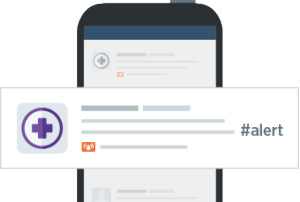Emergency Twitter Alerts
On September 24, Twitter announced a new feature designed specifically for local, state, and federal agencies. Inspired by the way individuals have made use of the social media channel in times of crisis, the good folks at Twitter decided to make things even easier for officials needing to communicate with their citizens.
It’s called the Twitter Alert.
 Twitter Alerts are tweets that show up as text messages on your smart phone. They are reserved for time-sensitive, critical information related to an unfolding event, and they can only be sent by organizations that have gone through a vetting process with Twitter.
Twitter Alerts are tweets that show up as text messages on your smart phone. They are reserved for time-sensitive, critical information related to an unfolding event, and they can only be sent by organizations that have gone through a vetting process with Twitter.
Cities governments, law enforcement groups, and public safety agencies are all eligible to sign up for Twitter Alert enrollment. Simply fill out this form online. Once you’ve set up your account you will be given a unique sign up page for citizens who wish to receive your alerts. Here’s what the FEMA alert sign up page looks like.
Of course, Twitter is not the first to enter into the mobile alert game. Other, similar efforts to keep citizens informed have been in the works for a while.
One of the better known options is Nixle. This service works through geographic targeting, and an extensive list of preferences. You can opt to get notices about police action, traffic, even local businesses.
Then there are local solutions such as AlertOC. Depending on how the programs are set up, these notifications can include emergency warnings, healthy and safety alerts, and other non-emergency messages the city thinks might be of interest.
Some Southern California residents, who had not signed up for any such alerts were surprised last month when they received text messages in the middle of the night about an Amber Alert. The Wireless Emergency Alert System that sent the messages targeted any phone in a certain geographic region. The event had many people scrambling to adjust their settings.
The determination of what constitutes an emergency will likely be one of key factors in the success of any emergency alert system, but in times of true duress, instant information can be a valuable asset:
- During Superstorm Sandy FEMA tweeted information about shelters and utility services.
- In the aftermath of the Boston Marathon bombing police used Twitter to correct misinformation and provide safety details.
- In Tokyo, after the earthquake and tsunami, the US Embassy kept their people in touch with Twitter.
We all hope to never have to deal with these sorts of disasters, but should they come our way, having a fast way to communicate accurate information can save lives. Twitter’s new tool is just one more way to reach residents.
For more information, check out Twitter’s official announcement here.


